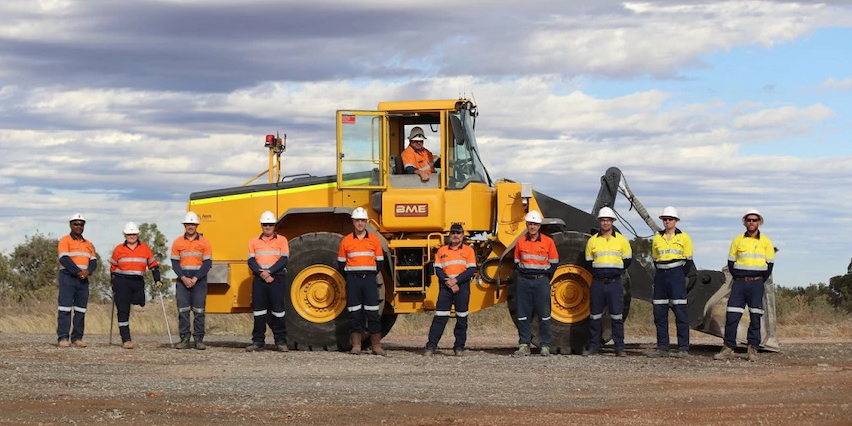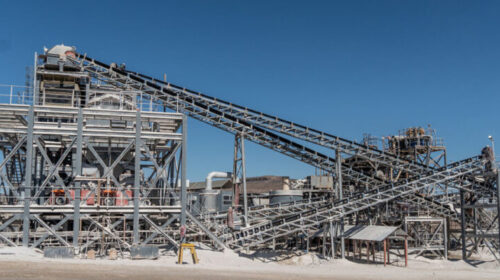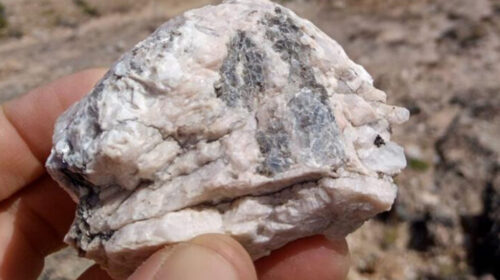Lithium battery manufacturers race to develop low-emission heavy equipment for mining
The mining industry globally is expanding, which makes getting to net zero emissions in the next decade unlikely at best.
But one small company in Newcastle is hoping to make a difference by developing big battery systems for heavy equipment.
Heavy vehicle battery manufacturer 3ME says the appetite for a low-emissions mining industry is high.
The fledgling company, which started with just three staff in 2018 and has 55 today, is looking to grow with recent investments and federal grants combining to nearly $25 million.
The company produces a lithium-ion battery system, made up of a series of blades, each with two cells and a circuit board, which is monitored remotely for potential faults and can be serviced and replaced individually.
The batteries are being trialled in 20-tonne loaders, but the company has begun scaling up to produce hundreds of loaders in the next few years and has begun work on systems for bigger trucks.
Global push to cut emissions
3ME chief executive Justin Bain, who has recently returned from a minerals policy and investment summit in Saudi Arabia, said the global shift to cut emissions was evident.
“I’m really feeling the global momentum … and I think there’s huge opportunity to make significant reductions over the next five years,” Mr Bain said.
An Australian Renewable Energy Agency (ARENA) report from 2017 found up to 41 per cent of total mine site energy usage was consumed by diesel-powered mining vehicles, so if the vehicles could become electric, emissions would reduce significantly.
3ME has made the shortlist of the Charge On Innovation Challenge, a project supported by BHP, Rio Tinto and Vale to fast-track ways to electrify large-haul trucks in open-pit mines.
Christine Gibbs-Stewart from Austmine, which represents the Australian mining equipment, technology and services sector, said the global program involving 20 mining companies and 300 suppliers was an important step forward.
“Never before have the big miners worked together in such a manner.”
Regulations drive change
Mining uses 3 per cent of the world’s electricity — half of that to break up rocks.
As renewable power makes energy cheaper and electric vehicles become more common, shifting to electric equipment to crush, move materials and process minerals will become more cost-efficient.
Mining engineer and consultant Peter Harrop said the industry’s pace of change was also due to the push by government regulations.
“They are getting a legal push and it’s getting tougher and tougher, and you have a big pull, where there are more and more government grants,” he said.
Mr Bain said in the end it would save miners money to make the change.
“The data is coming together to show it can be more productive. We can lower the cost of maintenance and achieve that lower total cost of ownership.”
Pace of change not fast enough
There are 500,000 mines sites across the world, including 1,000 big ones, and they are going deeper underground and offshore to find the minerals the world needs.
It has become more dangerous to operate in those environments, so electric mining equipment of all kinds, much of it automated, has benefits.
Dr Harrop believes hydrogen will replace diesel in heavy industry in the next 10 years, but he said miners were moving too slowly, choosing to wait until current equipment wore out before upgrading.
“I don’t want to be flippant but all the equipment is there … just buy it!
“Hitachi has big battery electric excavators, Liebherr in Germany has concrete trucks that are battery electric, Caterpillar and Komatsu are doing superb work, and Sandvik of Sweden has a complete range for deep mines.”
Can miners get to net zero in time?
Dr Harrop is not the only one who thinks Australia will struggle to meet its carbon emissions goal.
Jan Kwak, managing director at global civil engineering company Hatch, oversees more than 200 projects including Sun Cable’s Australia-Asia Power Link, the world’s largest solar energy project.
He said Australia needed to radically shift its mindset and begin trialling new technologies.
“As a nation, we’re failing to embrace key low-carbon energy solutions, such as hydrogen, hydro schemes — in particular pumped hydro — and nuclear, which can expedite our goals to reduce emissions,” he said.
Mr Kwak, who also chairs the Green Hydrogen Consortium, which includes BHP and Fortescue, said major companies were investing in the wrong things.
“Time and again we’re seeing companies investing in unrealistic or ineffective solutions such as carbon capture and storage or brown hydrogen developed from coal.”
Even the move by major miners to sell their polluting coal mines isn’t necessarily helping, according to Mr Kwak.
“Companies that are divesting their thermal coal assets are simply selling them on while the mines continue to operate.”
44 total views , 1 views today





